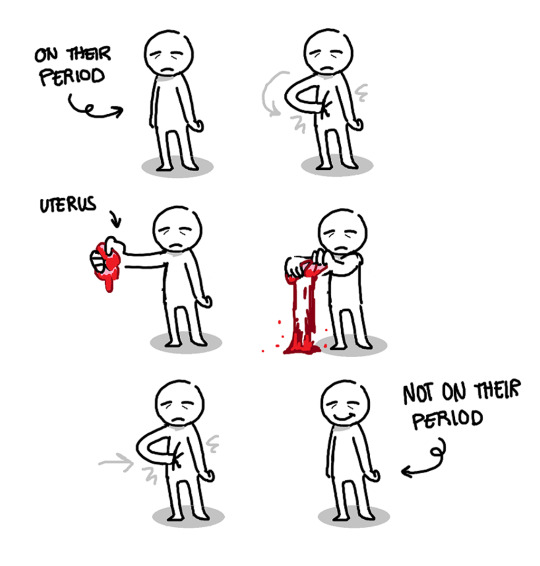Text

About the latest Gatetown comic post.
#they don't know#artists on tumblr#furry#scalie#Gatetown#I knew people would appreciate getting that armpit crease just right
1 note
·
View note
Text
More Writing Notes for your Sex Scenes

Sexual Arousal - the physical state of being sexually "turned on."
You can become aroused by sexual thoughts, erotic media, or sexual stimulation.
Arousal is the first stage of the sexual response cycle, followed by plateau, orgasm, and resolution.
Arousal can be a pleasurable standalone sexual activity—no masturbation or partner needed.
Ways to Get Turned On
If you want to engage in sexual activity, either with yourself or a partner, try these arousal-inducing activities to set the mood.
Take the pressure off. Set a gentle intention to get aroused, and open yourself up to sexual possibility. If you're feeling worried about something, especially your sex drive, it can be hard to get in the mood. Try journaling, breathing exercises, or meditation to manage your stress before trying to masturbate or have sex with a partner.
Listen to music. Putting together a sexy playlist of songs that make you feel confident and relaxed is a great way to prepare for masturbation or partner sex.
Create mood lighting. Warm, incandescent bulbs can create a relaxing atmosphere. Dim or turn off overhead lights, cover lightbulbs with lamp shades or fabric, or light candles to create a sexy ambiance.
Prioritize self-care. Caring for yourself can help you connect with your body and enter a more relaxed state of mind. Practice wellness by taking a candlelit bubble bath, engaging in a hobby, or working out. Another example is rubbing lotion on your body, which can easily transition into self-massage—one of the best types of solo foreplay.
Explore sex toys. The use of vibrators, dildos, butt plugs, or other sex toys can lead to arousal. Try turning a vibrator on and feeling the vibration with a finger, or apply lube to a toy and rub it on your inner thigh to get aroused.
Read erotica. Reading erotic literature (or sexts from a partner) can lead to arousal, especially if you find your mind wandering while massaging yourself. You can also try listening to audio porn, which allows you to close your eyes and use your hands to caress your body.
Look in the mirror. For a person with a vulva, a handheld mirror is one of the best ways to get to know your own anatomy and explore your arousal triggers. Seeing your own body in the mirror can also be a huge turn-on. Check yourself out in the mirror and touch parts of your body that feel good, or give yourself a gentle head or neck massage.
Sexual Arousal - often overlaps with sexual desire, which simply refers to wanting sex but doesn't always correlate with a physical response.
For most vulva owners, sexual desire is associated with hormones.
Higher levels of estrogen are associated with increased sexual desire, while higher levels of progesterone might decrease sexual desire.
It’s worth noting that hormone levels can change throughout the menstrual cycle, after menopause, and due to medications like birth control and hormone therapy.
Stress, illness, and life changes can also impact sexual function.
If you find that your physical arousal doesn't match up to your sex drive, talk to your doctor or a sex therapist.
How Vulvas Respond to Arousal
The physical expression of arousal can look different for different people, but vulva owners may experience these physiological changes when they are aroused:
Increased blood flow: The erectile tissue in the labia, clitoris, and nipples may enlarge and/or harden.
Lubrication: The vaginal walls may expand and lubricate.
Increased blood pressure: Arousal may increase both blood pressure and heart rate.
Ways for Vulva Owners to Trigger Arousal
If you want to get aroused or turn on your partner, consider these techniques:
Use your brain. Physical touch can lead to arousal, but the brain might be the most important sexual organ. Sexual experiences activate dopamine receptors in the brain—the neurotransmitters responsible for the sensation of pleasure. To trigger arousal, seek out sexual stimuli such as porn, erotica, and audio porn, or think about your sexual fantasies. Mental health is an essential part of your overall well-being, and taking care of your mental health—even just by getting consistent sleep and exercise—can also boost your sexual health.
Stimulate erogenous zones. Erogenous zones are parts of the body that can trigger arousal or pleasure when touched. These zones can be different for different people, but some of the most common erogenous zones include genitalia, nipples, breasts, neck, mouth, hands, feet, thighs, and butt.
Add lube. Simply put, lubrication increases sexual pleasure. During foreplay, use a little lube to massage your breasts, thighs, or any place that feels good. When you're ready, apply lube to the vulva. For many vulva owners, the level of moisture the vagina produces naturally does not always match their sexual motivation. This is especially common after menopause when estrogen levels decrease, and it doesn't signal any kind of sexual problem—it just means you need more lube.
Libido - (also known as sex drive or sexual drive) a person’s reflexive arousal abilities.
A person with a low libido may experience less sexual desire than someone with a higher one.
As a result, a person with a high libido is more likely to seek out engagement in sexual activity, whether through masturbation, partnered intercourse, or the pursuit of an active sex life.
Causes of Low Libido
Low sex drive has many potential causes, though it is not a cause for concern if it doesn’t impact your or your partner’s life adversely. Here are some common reasons for a reduced sex drive:
Alcohol or drug use: Heavy drinking or consumption of recreational drugs can make it harder for a person to achieve ejaculation or maintain arousal.
Medical conditions: Several common physical health conditions can result in a lower sex drive, including fluctuating sex hormones (like estrogen or testosterone levels), which change throughout a person’s lifetime. Decreased libido can also result from reactions to certain medications or related health problems, like vaginal dryness or erectile dysfunction. The aftermath of surgery can affect a person’s sexual organs or blood flow, potentially leading to lowered sexual desire.
Mental health issues: A person’s mental well-being directly impacts their desire to have sex. Regardless of how far in the past it may be, trauma from past sexual abuse can foster lifelong low sexual desire. Low self-esteem or body dissatisfaction can lead to performance anxiety, making it harder to feel sexy and curbing one’s libido. Conditions that affect a person’s motivation (like depression and anxiety) can likewise lessen one’s sex drive.
Relationship problems: Loss of libido may be a side effect of unresolved relationship issues with your partner. While it’s normal for couples to have less sex the longer they’ve been together, a lack of trust or poor communication can make their sex life less active.
Sexual incompatibility: If you and a sexual partner want different things from sex, it can be challenging to achieve the physical and mental conditions necessary for a pleasurable interaction. Similarly, if one partner reaches ejaculation long before the other without taking care of the other partner, it can create tension and resentment.
Stress: The everyday stress of lifestyle changes or a poor work-life balance can be draining physically and mentally, leaving little energy for sexual arousal. Lack of regular sleep can further exacerbate the situation.
How to Increase Libido
Just as low libido can have many causes, there are many potential ways to address it, including the following measures:
Aphrodisiacs: While there isn’t much data to suggest that foods typically thought of as aphrodisiacs affect libido from a physical standpoint, their psychological placebo effects (serving to get you in “the mood”) can still be helpful if they make you feel more confident.
Experimentation: Trying new forms of sexual experience—or means of intimacy with your partner that don’t involve traditional sex—can lead to productive discoveries that help you reach new levels of desire for your partner. Experiment with sex games for couples or incorporate sex toys to mix things up in the bedroom.
Hormone treatment: If a medical professional determines that you have a hormonal imbalance, they may prescribe a course of treatment to adjust your hormone levels.
Relationship counseling: If you and your sexual partner aren’t communicating effectively, hiring a sex therapist or couples counselor to facilitate an open dialogue can be beneficial. Working with a professional may help make it easier for you to express sexual fantasies and fears to each other.
Stress management: Finding ways to reduce stress in your life can free up mental energy and motivation for sexual arousal. Increasing physical activity and maintaining a regular sleep schedule can also help.
Orgasm
Orgasm - a sequence of muscle contractions that occur in the pelvic region of the body at the height of sexual pleasure.
For penis owners, orgasms tend to culminate in the release of semen from the urethra.
Vaginal orgasms, and other types of orgasms, may not involve a release of fluid, but they nonetheless provide immense pleasure.
Direct stimulation of erogenous zones, emotions, and even dreams can lead to orgasm.
Types of Orgasms
An orgasm can involve varying types of sensations and many different body parts. Consider some of the wide variety of orgasms the body can produce:
Penile orgasm: A penile orgasm occurs with the ejaculation of semen from the penis. In addition to being highly pleasurable, ejaculation is a biological necessity for reproduction.
Clitoral orgasm: For a majority of vulva owners, the clitoris is the key to sexual pleasure. Between seventy and eighty percent of vulva owners can only achieve orgasm through direct clitoral stimulation. Most vulva owners require stimulation of the clitoris to achieve an orgasm, whether during masturbation with vibrators or penatrative sex toys, or during sexual intercourse.
Vaginal orgasm: For vulva owners, vaginal penetration or stimulation of the vaginal canal can lead to a vaginal orgasm.
Cervical orgasm: For some vulva owners, the cervix is an erogenous zone. Stimulation of the cervix, or the A-spot or O-spot on either side, can lead to cervical orgasm. When stimulating the cervix, be gentle; for many people, pressure on the cervix can be painful (especially during menstruation, when the cervix is extra sensitive).
Anal orgasm: An anal orgasm occurs when you climax from stimulation of your anus, which is full of sensitive nerve endings. Penis owners can experience a unique prostate orgasm from anal stimulation; anal sex stimulates the prostate, a sensitive organ commonly known as the P-spot. Be sure to use plenty of lube when engaging in anal sex.
Nipple orgasm: For some people, the nipples are an intensely erogenous zone, and their sexual stimulation can produce an orgasm much like a penile or clitoral orgasm.
Blended orgasm: A blended orgasm involves multiple kinds of orgasms simultaneously. In most cases, a blended orgasms will feature some combination of vaginal, clitoral, penile, or anal orgasms.
Coregasm: A coregasm is an orgasm achieved by doing core exercises that engage the pelvic floor muscles. These muscles, which are also stimulated during anal sex, can cause arousal. You may need additional sexual stimulation to increase blood flow to your penis or clitorous and reach orgasm from exercise.
Multiple Orgasms - can be one of two things—either a series of distinct orgasms or an orgasm followed by a sequence of additional involuntary pelvic floor muscle contractions.
This experience appears to be much more common in vulva owners than in penis owners, since penis ejaculation initiates a longer refractory period (the recovery period during which your genitals are unresponsive).
That said, some penis owners get around the refractory period by learning to orgasm without ejaculation, while some vulva owners never or rarely experience multiple orgasms.
Tips for Having Multiple Orgasms
Use these tips while masturbating to learn more about your own pleasure, or try them with a partner to spice up a sexual encounter.
Relax. Starting a sexual activity with the goal of reaching multiple orgasms—solo or partnered—can put a lot of pressure on you. When trying these techniques, open yourself up to the possibility of increased pleasure, and accept that you may or may not experience multiple orgasms. Breathe deeply during stimulation to keep your mind and body relaxed.
Do Kegel exercises. Performing Kegels involves tightening and releasing your pelvic floor muscles, giving you more control over the muscle group. Strengthening your pelvic floor can lead to more intense orgasms. Contracting these muscles during masturbation or partner sex can also intensify orgasms and even bring you to climax.
Practice edging. Edging is a method of extending sexual arousal by getting close to the point of climax and then holding off. This practice is key for a marathon session with multiple orgasms. For people with penises, edging can help you increase sexual stamina and can even train your body to orgasm without ejaculating, allowing you to experience multiple orgasms within a single session.
Use lots of lube. Simply put, lube makes sex feel better. Even if your body produces sufficient natural lubricant, adding more lube to the mix can enhance your pleasure, especially over the course of a longer session in which you experience multiple orgasms.
Stimulate different erogenous zones. If one erogenous zone feels overstimulated, try stimulating another orgasm-inducing area. For vulva owners, if clitoral stimulation feels too sensitive after your first orgasm, back off of the clitoris and try stimulating the A-spot instead. For people with penises, you might try a prostate orgasm and then stimulate your penis. Try switching sex positions to keep things interesting (and comfortable).
Work the refractory period. Many people find that they're either unresponsive or uncomfortably sensitive after the first orgasm. If you need to take a time out from genital touching, you can still touch other parts of your body to prolong arousal. This is a great time for some foreplay techniques, such as massage or nipple play.
Practice orgasm without ejaculation. For many penis owners, ejaculation will cause you to become unresponsive to genital stimulation. One way around this is to practice having an orgasm without ejaculating by contracting your pelvic floor muscles just before you ejaculate.
Add toys. A sex toy, such as a wand-style vibrator, can be the key to heightening sexual stimulation and orgasming multiple times.
Erogenous Zones - areas of the human body that are especially sensitive.
During sexual foreplay, stimulating these areas can encourage relaxation, promote blood flow, build arousal, enhance sexual pleasure, and help you or your partner achieve orgasm.
Common erogenous zones include the armpits, lower abdomen, mouth, neck, breasts, buttocks, shoulders, lower back, and genitals.
Every person responds differently to stimulation in these areas, and factors like timing, mood, partner choice, and the type of stimulation can impact your preference.
Erogenous Zones
Here are some of the most common human erogenous zones:
Armpits: Your inner arms and armpits are especially sensitive areas where many people are ticklish. Using a light touch along this area can stimulate the nerves and prompt a desirable response.
Behind the knee: Behind the knee is another sensitive, nerve-rich area of the body. Paying particular attention to it during a full-body massage can elicit arousal.
Bottoms of feet: Feet have many nerve endings and pressure points, and stimulating this often-neglected area with a foot massage or light touching can lead to pleasurable sensations.
Belly button and lower abdomen: The belly button and lower stomach are sensitive areas near the genital region. A touch or gentle tickle near these areas can generate a strong sexual response.
Ears: From the tip to the lobe, the ears are full of sensory receptors and are one of the most sensitive erogenous zones on the body. Many people feel significant arousal when receiving light nibbles or kisses on their ears.
Genital region: Genitals are the most commonly known erogenous zones and the ultimate source of sexual arousal. For women, specific erogenous zones in the genital area include the pubic mound, the clitoris, the G-spot (two to three inches inside, on the front vaginal wall), the A-spot (four to five inches inside, on the front vagina wall), and the cervix. For men, specific erogenous zones in the genital area include the head (or glans) of the penis, the frenulum (the underside skin where the shaft and the head meet), the foreskin (for uncircumcised men), the scrotum, the perineum (the skin between the penis and anus), and the prostate (reached inside the rectum).
Hands: There are many nerve endings in the hands that you can stimulate during foreplay. Palms and fingertips are especially sensitive to light kissing and licking. Slowing kissing or sucking a finger can also be pleasurable for some recipients.
Inner thighs: The inner thighs are especially sensitive, so using a light touch along this area, especially as you move toward the genitals, is often incredibly pleasurable for the receiver.
Lower back: The small of the back (also called the sacrum) is a delicate and vulnerable part of the body for most people, so brushing or holding it during intercourse can evoke pleasure.
Mouth: The mouth is a robust erogenous zone, which is one reason why kissing is such a popular part of foreplay. Lips, teeth, and tongue are all great tools to use when stimulating your partner’s mouth.
Neck: The neck is one of the most popular erogenous zones, from the nape at the back of the neck to the sides below the jawline. Many people enjoy stimulation along the neck with a light touch or kissing.
Nipples: The nipples and the areolas (or the skin around the nipples) are an incredibly sensitive hotspot on the body and is closely tied to the sensations in the genitals. Many people vary widely in the sensitivity of their nipples—some are too sensitive to enjoy sensations, while others enjoy rougher play such as biting or nipple clamps.
Scalp: The scalp has many sensitive nerve endings, which is why scalp massages can be very enjoyable. Gentle massaging or hair pulling can activate these nerves and send pleasurable sensations throughout the body.
Wrist: The delicate skin of the inner wrist is a small erogenous zone that can build toward extreme pleasure. Using a light touch along your partner’s wrist is a great way to initiate foreplay.
How to Stimulate Erogenous Zones
If you want to learn how to incorporate erogenous zones in the bedroom, check out the following tips:
Check in with the individual. While everyone has erogenous zones, the levels of pleasure that each person receives upon stimulation of these areas varies widely. These differing sensitivity levels make it difficult to predict if someone will respond favorably to stimulation in an area. The best way to enjoy erogenous zones while promoting sexual health and wellness is to talk to your partner to determine what they like, or, if you’re both comfortable with it, exploring in a safe environment to see what you both like.
Experiment with different sensations. You can use your hands and mouth to stimulate erogenous zones, or lubricants and toys—like a feather tickle, a gentle nibble, a liquid lube, or a vibrator or other sex toy. You can also try temperature play—for instance, trailing an ice cube around your partner’s navel or drinking hot tea and then trailing your tongue along the nape of the neck. Your partner’s different erogenous zones will react differently to stimulus, so experiment and find what works best for them.
Take it slow. The body has many erogenous zones, but that doesn’t mean stimulating them all at once is the best way to elicit pleasure. Slow, teasing foreplay can be extremely rewarding for you and your partner because it builds anticipation and elongates pleasure. As you work to stimulate your partner, go slowly, and take your time with each body part, building up the pleasure as you enjoy the experience.
Explore during masturbation. Erogenous zones aren’t just useful during partnered sex—they can be a great way to become more in tune with your own body during solo masturbation. Explore different parts of your body during solo play to discover sensitive areas; it’s often a great way to achieve more full-body orgasms.
Refractory Period - a span of time in the sexual response cycle that occurs after orgasm or ejaculation, during which a person won’t respond (physiologically or psychologically) to sexual stimulation and is incapable of orgasming.
During this time, blood pressure and heart rate decrease, the brain releases hormones, like prolactin or oxytocin, and dopamine levels lower to promote rest and recovery.
All people, regardless of gender, experience a refractory period, lasting from a few seconds up to 24 hours.
The terms “absolute refractory period” and “relative refractory period” are sometimes confused with the refractory period in human sexuality. These terms describe the action potential of muscle cells or neurons in the brain and are unrelated to the refractory period of sexual arousal after orgasm.
Factors That Affect the Length of a Refractory Period
Libido and arousal level. If you have a high libido or feel heightened arousal during a particular sexual encounter, you may experience a shorter refractory period, allowing you to orgasm much sooner after a previous orgasm.
Sexual function. Healthy sexual function can often help overcome your refractoriness quicker. In contrast, if you experience sexual dysfunction (like erectile dysfunction or difficulties producing lubrication), you’re more likely to have a difficult time orgasming soon after a previous climax, and your body may need to wait longer before becoming aroused again.
Overall health. Healthy individuals who eat a balanced diet and engage in regular exercise are more likely to have shorter refractory periods than those who consistently eat unhealthy foods or don’t exercise regularly.
Age. In general, younger individuals have shorter refractory periods than older individuals. By age 40, many people experience changes in their libido, hormone levels, and sexual function that can extend their refractory period.
Genitalia. As a general rule, the male refractory period is longer than the female refractory period. The average range for men is between a few minutes and two hours before they can ejaculate again; for women, it’s between a few seconds and a few minutes before they can achieve another climax.
Type of sexual experience. Research shows that the type of sexual experience a person engages in can affect the length of their recovery time. If you engage in solo masturbation, your refractory period may only be a few seconds, whereas your refractory period may be longer if you engage in partnered sexual intercourse.
Sources: 1 2 3 4 5 6 7 ⚜ More: Notes ⚜ Writing Resources PDFs
296 notes
·
View notes
Text
Feels like a devious brain hack that these are in alphabetical order. I’d like to skim what I see and move on but my brain is like “No, you can’t get a comprehensive overview this way, what if there’s something really useful around the Ms!”

Some Words to Describe Eyes
Ablaze - radiant with light or emotion
Alert - watchful and prompt to meet danger or emergency
Angelic - resembling, or suggestive of, an angel (as in purity, holiness, innocence, or beauty)
Beady - small, round, and shiny with interest or greed
Beguiling - agreeably or charmingly attractive or pleasing
Bewitching - powerfully or seductively attractive or charming
Blazing - of outstanding power, speed, heat, or intensity
Bloodshot - inflamed to redness
Calm - still; free from agitation, excitement, or disturbance
Captivating - charmingly or irresistibly appealing
Cold - marked by a lack of the warmth of normal human emotion, friendliness, or compassion
Critical - exercising or involving careful judgment or judicious evaluation
Curious - marked by desire to investigate and learn
Doe-eyed - having large innocent-looking eyes
Dry eye - a condition associated with inadequate tear production and marked by redness, itching, and burning of the eye
Eagle eye - one that sees or observes keenly
Eye roll - an upward turning of the eyes especially as an expression of annoyance, exasperation, disbelief, etc.
Feline - sleekly graceful
Flecked - marked with streaks or spots
Gleaming - glinting; to give off reflection in brilliant flashes
Glistening - shining with reflected light
Good eye - a special ability to recognize a particular thing or quality
Gloomy - having a frowning or scowling appearance
Guileless - innocent, naive
Hypnotic - readily holding the attention
Inviting - attractive, tempting
Iridescent - having or exhibiting a lustrous or attractive quality or effect
Irresistible - impossible to resist (i.e., to exert force in opposition)
Keen/sharp eye - a special ability to notice or recognize a particular thing or quality
Lovestruck - powerfully affected by feelings of romantic love for someone
Magnetic - possessing an extraordinary power or ability to attract
Moon-eyed - having the eyes wide open
Mysterious - exciting wonder, curiosity, or surprise while baffling efforts to comprehend or identify; mystifying
Narrowed - to lessen in width or extent
Opalescent - reflecting an iridescent light
Penetrating - having the power of entering, piercing, or pervading
Piercing - perceptive
Puffy - swollen in size; bloated
Radiant - vividly bright and shining; marked by or expressive of love, confidence, or happiness
Rheumy - having a watery discharge from the mucous membranes
Riveting - having the power to fix the attention; engrossing, fascinating
Scrunched - to cause (something, such as one's features) to draw together—usually used with up
Sheep's eye - a shy longing usually amorous glance—usually used in plural
Soulful - full of or expressing feeling or emotion
Striking - attracting attention or notice through unusual or conspicuous qualities
Sultry - hot with passion or anger
Tantalizing - possessing a quality that arouses or stimulates desire or interest
Tearful - flowing with or accompanied by tears
Tired - drained of strength and energy
Vapid - lacking flavor, zest, interest, animation, or spirit; flat, dull
Wandering eye - a tendency to look at and have sexual thoughts about other people while already in a romantic relationship
Watchful - carefully observant or attentive
Weary - exhausted in strength, endurance, vigor, or freshness
Weather eye - constant and shrewd watchfulness and alertness
Worshipful - giving or expressing worship or veneration
Sources: 1 2 ⚜ Word Lists ⚜ Writing Resources PDFs ⚜ Describing Eyes
It's alright (I have too many sideblogs for my own good at this point)! You can find more words to describe eyes in the sources linked above. Hope this helps with your writing.
724 notes
·
View notes
Text
Writing Notes: Villain Archetypes

Many of the great villains that oppose classic heroes fall into a handful of villain archetypes:
Anti-villain: The anti-villain is a villain archetype in which the bad guy has a sympathetic motivation or appealing characteristics. In the same way that an anti-hero is ostensibly a good guy with villainous or immoral tendencies, an anti-villain may have justifiable, noble goals or even a good side. Example: Hannibal Lecter in The Silence of the Lambs (portrayed by Anthony Hopkins in the film version).
The beast: A classic villain whose goal is to terrorize and attempt to defeat the main character, the beast is a literal monster. This type of villain cannot be reasoned with and is often found in the horror or science fiction genres. The whale from Moby Dick and the shark from Jaws are examples of this type of villain.
The bully: Bullies serve as simple, straightforward opposition to the protagonist. This character archetype is sometimes marked by a backstory that explains their mean and oppressive tendencies, such as a childhood marked by abuse or insecurity. Other times, they are simply mean for the sake of being mean. Examples include Nurse Ratched from One Flew Over the Cuckoo’s Nest and Fletcher from the film Whiplash.
The machine: The machine is similar to the beast, with one major difference: It is a technological construct and is therefore lifeless and incapable of pain, fear, and emotion. The machine can often be found in science fiction thrillers—like Ultron in Avengers: Age of Ultron or Arnold Schwarzenegger’s robotic killing machine in The Terminator.
The mastermind: The mastermind opposes the protagonist by overseeing a brilliant, diabolical master plan. They are a gifted schemer and evil genius who attempts to defeat the protagonist mentally as opposed to physically. Great villains in the mastermind tradition include Hans Gruber from Die Hard and Lex Luthor from the Superman series.
Evil incarnate: This villain personifies evil itself, offering little in the way of character development or backstory. This type of evildoer serves as an obstacle to the hero’s journey and is primarily found in fantasy and superhero genres. Examples include Sauron from The Lord of the Rings, Darth Vader from Star Wars, and the Joker from The Dark Knight.
The henchman: The henchman exists to do the dirty work of someone else, usually the mastermind or another major evil character in the story. They are functionally the sidekick of the main villain. Though they usually lack the villain’s brains, they make up for it in brawn. Examples include Boba Fett from Star Wars and the monkeys from The Wizard of Oz.
The fanatic: The fanatic’s villainy is driven by an extreme ideology. Oftentimes, they are propelled by religion or a twisted moral belief that gives them fuel to carry out their twisted mission. The serial killer John Doe from the movie Seven is a true villain in the fanatic tradition.
Tips for Writing Compelling Villains
When it comes to writing villains who transcend cliches, there are 4 techniques that can elevate your writing:
Make sure your villain has a strong connection to your hero. A true villain is inextricably connected to the hero and aids in the hero’s character development.
Make them a worthy opponent. A great villain is a strong and worthy adversary to your hero, directly opposing the hero archetype of your protagonist. The villain shouldn’t be weak and easily beaten, nor should they be so powerful that they can only be defeated by random chance. In the Sherlock Holmes stories, Holmes’s arch-nemesis Moriarty is a brilliant criminal mastermind. Having a villain who is equal in skill and intelligence to your hero will raise the stakes of their encounters, creating a credible threat to your hero.
Put yourself in your villain’s shoes. When it’s time for your villain to act, put yourself in their place. Think about challenges or hardships that might tempt people to act out or behave badly. How do you react to bad things? Tap into those emotions and try to apply them to your villain.
Consider your villain’s motivation. Why does your villain want to rule with an iron fist? Why do they want to put the damsel in distress? As with your main character, determining your antagonist’s motivation can help you unlock other aspects of their character, such as their goals and their personality.
Source ⚜ Writing Resources PDFs ⚜ Villains
267 notes
·
View notes
Text

HANG IN THERE BABY!! instagram | bluesky | patreon
‼️prints here
69K notes
·
View notes
Text

drawtectives spotted at the bodega or smth idk
[ID: art of Jancy from Drawtectives in her Season 3 design, looking forward with a grimace. Below is a tumblr post reading: "fuuuck that is my circus. are those...? yep... those are my monkeys.... goddammit." End ID.]
2K notes
·
View notes
Text
I'm back. Took December off, and a little more time to get warmed up. Time to get back to work. Bleh!
0 notes
Text





patreon sketches from december!
also my last sketch page of 2024
847 notes
·
View notes
Photo


once again it’s that time of year where my brother puts up the Holiday Decoration
165K notes
·
View notes
Text
Shoutout to Jaheira giving a rousing speech, turning into a big cat, and leaping directly onto the cultist paladins’ halberds and exploding
13 notes
·
View notes











